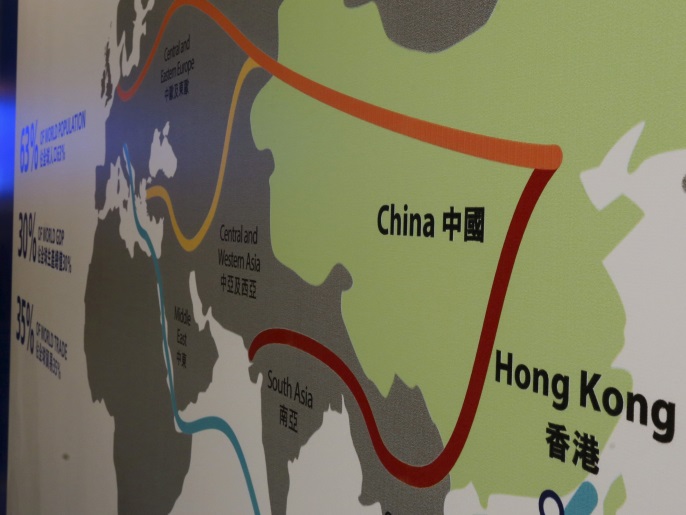The "Belt and Road" initiative - the developmental approach adopted by China - is based on the revival of the ancient Silk Road;
In order to enhance interdependence and interdependence in light of the tremendous changes that the world is witnessing at the level of the economy and geopolitical balances.
Writer Mahwish Kayani says - in a report published by the American "modern diplomacy" website - that China is seeking through this project to reach new markets and secure global supply chains that will help it achieve sustainable economic growth and ensure social stability.
China has increased its involvement in the Middle East over the past few years, and has established friendly relations with a variety of countries, including those on various sides of regional divisions.
The Middle East is considered one of the most important regions for China, as it is located at the crossroads of 3 important continents, Europe, Africa and Asia.
All of these continents are believed to be linked to the Chinese Belt and Road Initiative.
This region is also located at oil road junctions, which are of great importance for China to meet its growing energy needs. The countries of the Middle East represent potential markets for China in terms of resources, and it is also a gateway to other markets in the world.
According to the author, China is currently working to increase its economic, strategic and diplomatic participation with the countries of this region, and these investments not only serve the interests of China, but also serve the Middle East countries that dream of developing and strengthening their economies to support the basis of social stability.
The Middle East is the closest to the four strategic maritime channels: the Bosphorus, the Dardanelles, Bab al-Mandab, and the Strait of Hormuz, through which most of Chinese trade passes.
The Belt and Road Initiative works to revive the ancient Silk Road in order to enhance mutual economic interdependence in the world (Reuters)
This region also plays a major role in security coordination, economic cooperation and cultural exchanges under the umbrella of the Belt and Road Initiative project.
In addition, this region accounts for more than 40% of China's oil imports, as well as being the main supplier of LNG.
In order to stimulate its economy, China relies on energy imports from this region, as more than half of Chinese crude oil imports - along with about 10% to 20% of natural gas imports - are from the Middle East.
Navigation security
The author pointed to another major reason that makes the Middle East region an essential part of the Belt and Road Initiative, which is concern for the security of navigation in China, as most ships carrying goods between Europe and China pass through many choke points in this region, so it is in China's primary interest to secure These points.
About a third of the crude oil is transported overseas and passes through the Strait of Hormuz.
Most of the seaborne trade between China and Europe passes through the Bab al-Mandab Strait, but this trade route exposes China's energy and commodity imports to disruptions and disruptions resulting from piracy, regional tensions and conflicts, and as a result, China is primarily concerned with securing these trade routes along with the search for Other alternative ways to avoid marine choke points.
China has improved its relations with the countries of the Middle East after the implementation of the Belt and Road Initiative, to become a major partner for import and export to the countries of the region.
Partnership diplomacy
China has intensified the development of Israel's transportation infrastructure, in an effort to create a route from the Red Sea to the Mediterranean bypassing the Suez Canal.
The author says that China is building a high-speed railway from Eilat on the Gulf of Aqaba to the port of Ashdod on the Mediterranean Sea, as well as investing in expanding the port, and as such, goods can be shipped from these ports to the port of Piraeus in Greece, which is managed by the Cosco Group. Chinese.
The author believes that China follows the diplomacy of partnership rather than alliances. In the alliance, the stronger side is afraid of getting involved in the conflicts of the weaker side, while the weaker side is afraid of being abandoned.
In contrast, strategic partnerships allay these concerns by reducing commitments, as the two sides agree to cooperate in areas where interests are common with managing potential areas of competition.
The development strategy of the Belt and Road Initiative indicates that this emerging economic power aspires to gain greater influence in the Middle East, which is one of the most important regions in the world.
In the new era - the author stresses - the most important interests of China are to maintain strong relations with the countries of the region to enhance its influence, while China's policy in the Middle East is more inclined towards the Gulf region.

